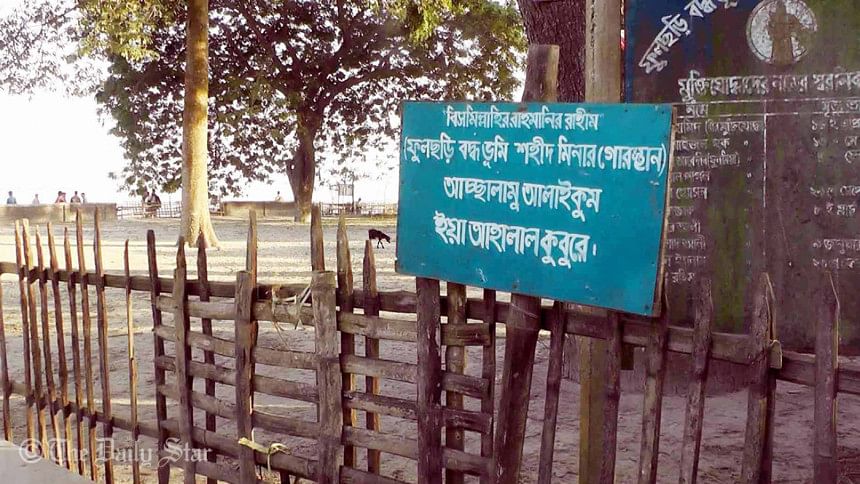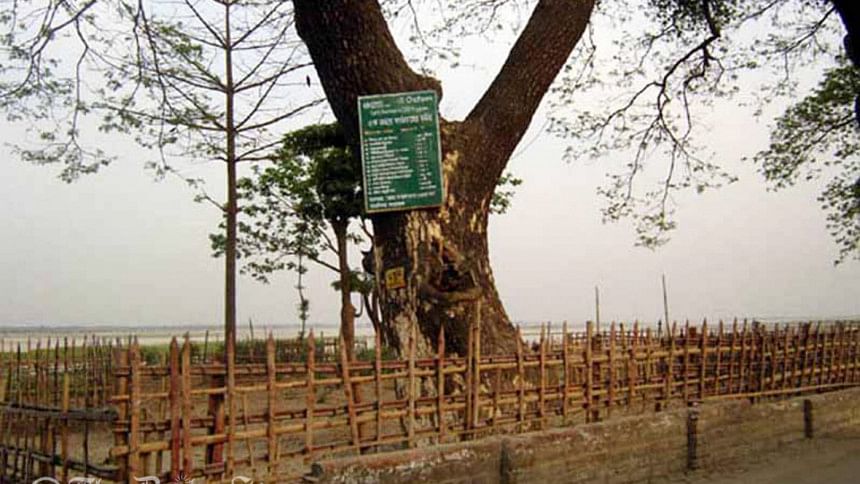Gaibandha mass grave now a barren ground

“Out of 30 mass graves, Fulchari killing ground is the largest in Gaibandha,” says GM Chowdhury Mithu, convener of Gaibandha Baddha-Bhumi Sangrakkhan Committee. Photo: Star
Shoddy fencing and a few worn out signboards are the only things that separate a piece of land in Gaibandha's Fulchari – where over 4,000 people were slain by the Pakistan forces in 1971.
The largest killing ground in Gaibandha now lie a barren piece of land that haunt those who can recall the atrocities committed there during Pakistan rule 45 years ago.

The largest killing ground in Gaibandha now lie a barren piece of land. Photo: Star
As he recalls, Pakistan military took stronghold in Teestmukh Railway Ferry Ghat of Fulchari on April 17, 1971, a day after they occupied Gaibandha sub-division. Strategically, it was a significant spot – being the gate to northern districts from Dhaka and the east.

Freedom Fighter Gautom Chandra Modak
Even the passengers coming and going through Teestamuk terminal were not spared from the torture, said Gautom Modak. "As many as four to five thousand Bangali people are buried here."
"The occupation forces raided surrounding villages, torched houses, killed villagers and violated women at their will. Within two months, the villagers were forced to leave behind everything and flee. The young left the areas to join the freedom fight."
"Out of 30 mass graves, Fulchari killing ground is the largest in Gaibandha," says GM Chowdhury Mithu, convener of Gaibandha Baddha-Bhumi Sangrakkhan Committee.
"We have repeatedly appealed to the authorities for the preservation of the mass graves, but have received little response. Prompt initiatives are needed," he said.

Shoddy fencing and a few worn out signboards are the only things that separate a piece of land in Gaibandha’s Fulchari. Photo: Star

 For all latest news, follow The Daily Star's Google News channel.
For all latest news, follow The Daily Star's Google News channel. 




Comments